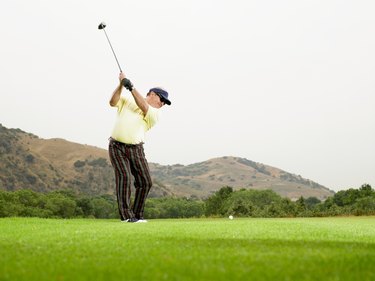
While your tendons and muscles are designed to be strong and support weight, they also have their limits. Overuse from gripping tools, sports equipment, typing or other activities that involve the hands can contribute to forearm pain. While the first signs of pain do not typically signal a more serious condition, failing to rest and treat the causes of your pain can lead to permanent nerve damage.
Carpal Tunnel Syndrome
Video of the Day
Carpal tunnel syndrome can cause forearm pain when gripping. This condition is common among those who use a keyboard or hand tools for work or who play a sport that requires gripping an object, like a tennis racket or golf club. The source of pain comes from repeated pressure on the nerve that moves through your wrist that provides feeling in to your hand. Carpal tunnel syndrome typically begins as pain or numbness in the hand or wrist that then develops into forearm pain that is made more noticeable when gripping.
Video of the Day
Tennis Elbow
Tennis elbow is another inflammatory condition related to gripping a tennis racket, golf club or tool, like a screwdriver or paintbrush. While carpal tunnel begins in the wrist, tennis elbow begins in the elbow with the tendons that connect to the elbow. These become inflamed and can create small tears due to the repetitive motion and stress on the elbow joint. Symptoms include pain and weakness, particularly on the outside portion of the forearm. You also may experience wrist pain. The pain often worsens when gripping and twisting items, such as when shaking hands or turning a doorknob.
Treatment
When you first begin to notice forearm pain when gripping, follow the RICE treatment method. Rest the hand and forearm, ice the area that is painful, wear a compression bandage or brace at the affected area, and elevate the elbow to minimize swelling. You also can take ibuprofen or other anti-inflammatory medications that help to relieve pain. If you suspect carpal tunnel is to blame, wearing a wrist brace may also help.
Considerations
In some instances, the nerves or tissues in your elbow can be so damaged that at-home treatments may not relieve your forearm pain. This is typically the case if you have tried conservative treatments for the forearm for more than a year without success. Your physician can recommend a next course of treatment, which may involve surgery to repair damaged tissues, nerves, or tendons in the forearm and wrist.
Is this an emergency? If you are experiencing serious medical symptoms, please see the National Library of Medicine’s list of signs you need emergency medical attention or call 911.